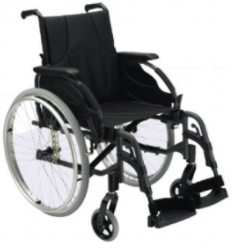Aging brings a unique journey of independence that can be empowering yet also a little overwhelming at times. One concern for seniors living alone is the risk of falls. It’s something many of us overlook until it happens, but a simple slip can lead to serious consequences.
With a few practical steps and thoughtful planning, you can reduce your risk and enjoy your independence. Managing fall risks is not just about moving furniture around or installing grab bars. Explore ways to build a safe and inviting atmosphere that complements your lifestyle.
Understanding how to prevent falls is essential to feel secure at home. Let’s explore some simple but impactful tips to create a safer space for yourself.
Know the Risks
Seniors living independently should be aware of the risks associated with falling. The National Institutes of Health states that with the growing number of older adults, one of the biggest worries is the increased risk of falls. Globally, falls are the top cause of injury-related deaths and non-fatal injuries, especially among the elderly. One in three people over the age of 65 will likely experience a fall at least once a year.
Simple daily tasks such as getting up or moving around your home can pose risks, especially if you struggle with balance. Environmental factors, such as dim lighting or uneven floors, can also increase the likelihood of a fall.
When you live alone, there’s often no one around to assist you if an accident occurs. Additionally, the fear of falling can create anxiety and lead to reduced activity, which only heightens the risk. By being aware of these dangers, you can take steps to protect yourself.
Decluttering and Home assessment
Making your home a haven is one of the best ways to help prevent falls for seniors living alone. Start by tidying up. Remove any clutter and secure or get rid of loose rugs and electrical cords that could cause trips.
Good lighting is essential. According to the Mayo Clinic, you can consider putting night lights in your bedroom and hallways to brighten up your space at night. Ensure that the paths to your light switches are clear, especially if they’re not right by the door. You could even replace standard switches with glow-in-the-dark or illuminated ones for a little extra ease.
Installing strong handrails on both sides of the stairs and adding grab bars in the bathroom can boost safety. Ensure the use of non-slip mats in areas prone to moisture, and keep items within easy reach to prevent unnecessary stretching. If you feel uncertain, reaching out to a professional for a home safety assessment is always a smart move.
Address Potential Health Issues
Taking care of potential health issues is essential when managing fall risks, especially for those living alone. Common health problems such as arthritis, diabetes, or hearing loss can impact your balance, strength, and awareness, making falls more likely.
Medications can also be a factor; some can cause dizziness or confusion, and the more prescriptions you take, the higher the risk. Cognitive changes, such as mild memory loss or dementia, can make it challenging to recognize hazards or remember safety precautions.
Regular check-ups, reviewing your medications with your doctor, and staying active can all help you maintain your confidence at home. A home-care nurse can help seniors lose mobility over time. For emergencies like actual falls, a paramedic is needed. Now that you understand the difference between a nurse vs paramedic, you know whom to call.
According to Saint Joseph’s College of Maine, many paramedics are now opting for nursing as a second career. The reason is that they already have the foundational skills and require additional training and credentials for a fulfilling career.
Stay Physically Active
For older adults living independently, maintaining an active lifestyle is one of the most effective strategies to prevent falls. According to the CDC, even just one session of moderate to vigorous physical activity can bring you quick health benefits. Regular exercise is an excellent way to ward off many chronic diseases.
Maintaining your brain health can help reduce the risk of developing dementia. This approach enables seniors to maintain their independence for a longer time. Regular movement keeps your muscles strong, your joints flexible, and your balance sharp, all essential for staying steady on your feet.
You don’t have to be a marathon runner to keep fit. Incorporating simple activities like walking, stretching, or gentle exercises such as yoga or tai chi can help you feel better.
Use Assistive Devices
APA notes that a surprising 30% of adults aged 75 and older experience significant difficulties while walking or climbing stairs. This older population is also more likely to face disabilities in areas like hearing (20.9%), independent living (22.4%), cognition (12.2%), and vision (8.7%).
However, using assistive devices can transform the experience of preventing falls for seniors. Items like canes, walkers, and rollators provide that extra bit of stability, especially on the days when you might feel a little wobbly.
If mobility challenges are more pronounced, mobility scooters can be a safe way to get around without the fear of falling. It’s crucial to select a device that suits your specific needs and get adjusted to your height for comfort and effectiveness.
Beyond just mobility aids, there are other handy gadgets, like grab bars, bed rails, alarms, and fall detection monitors. They can enhance your safety at home. These tools are great for preventing falls, but they also help you feel more confident. They allow you to enjoy your independence and stay active for a longer time.







